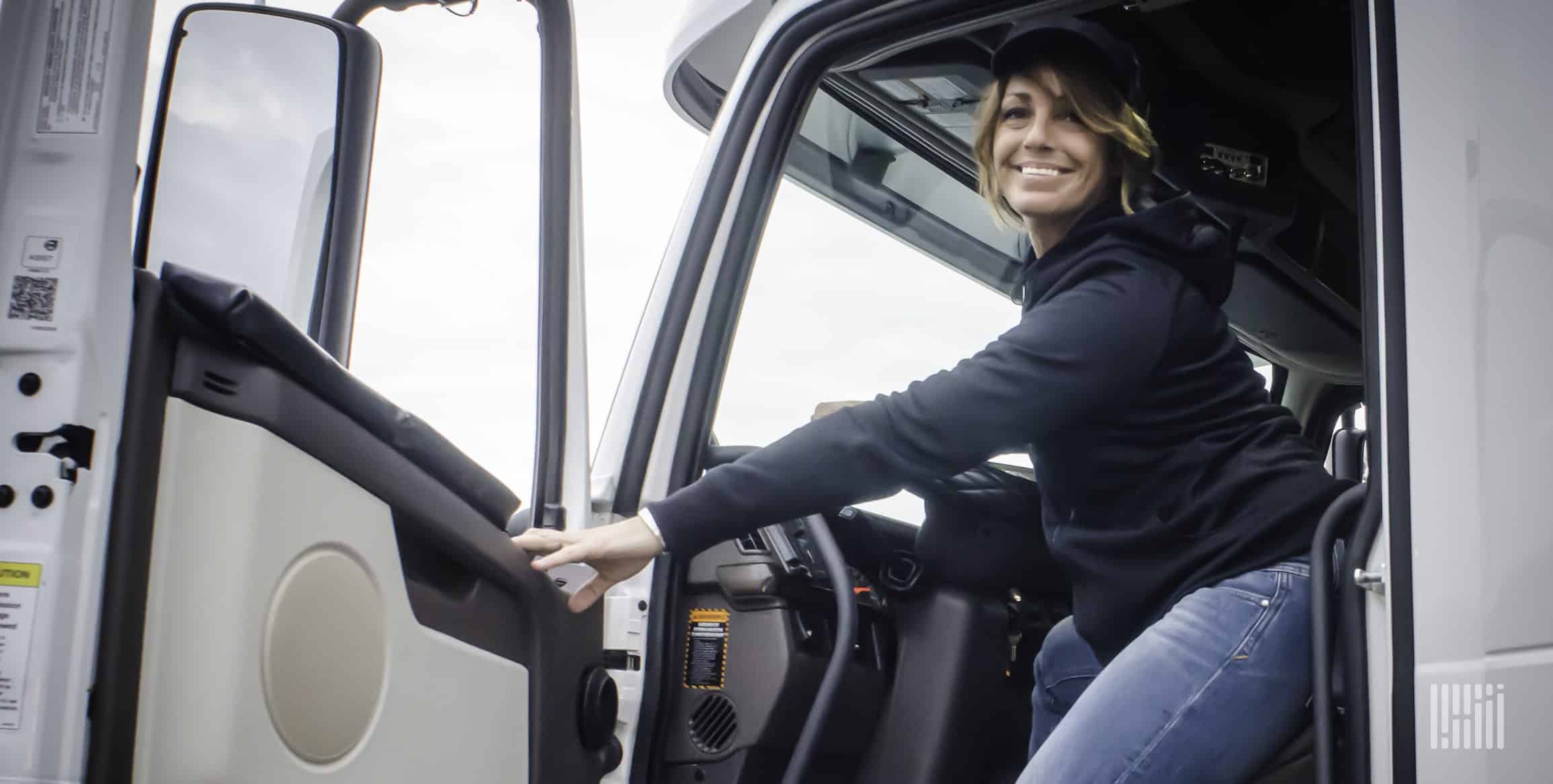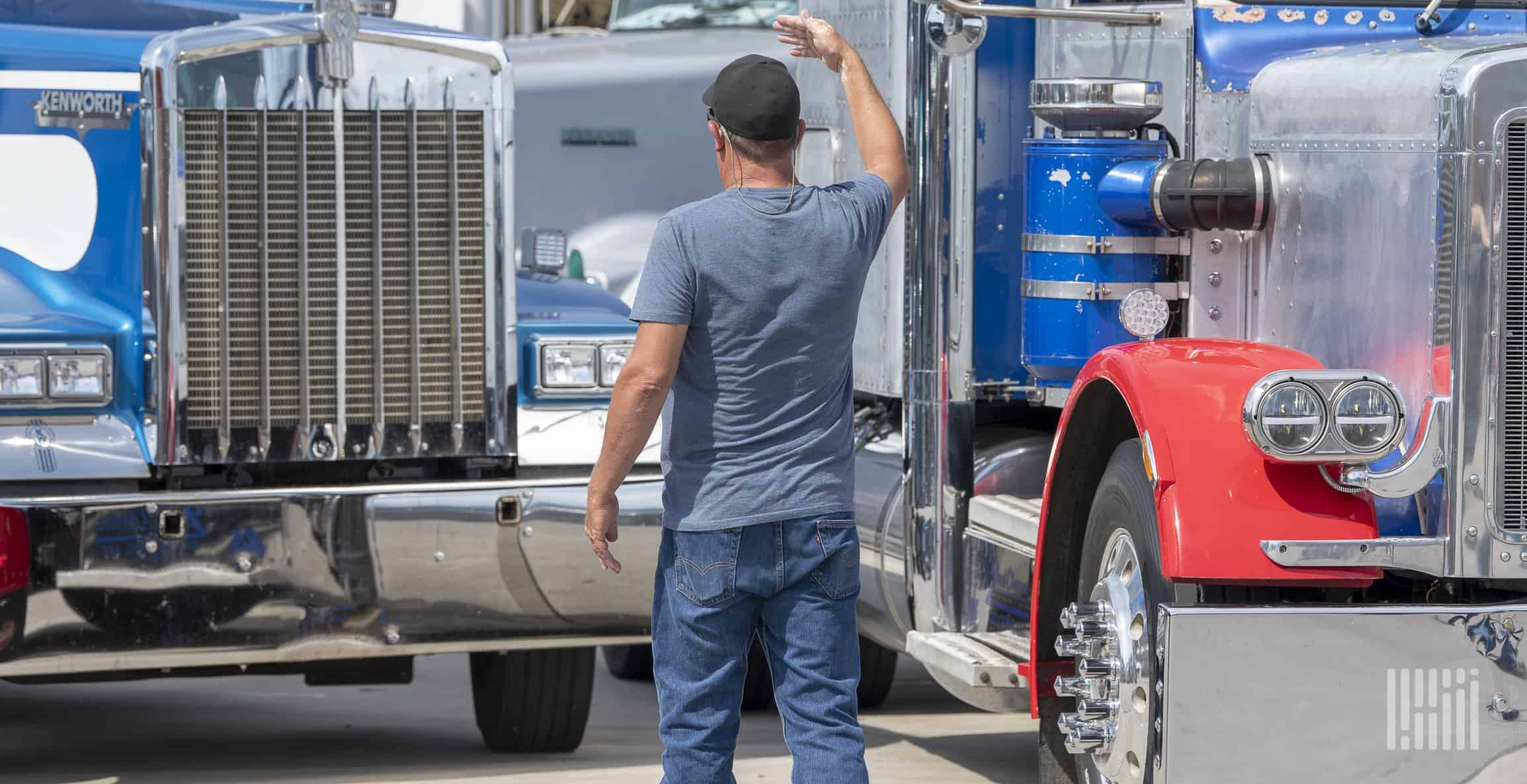Most modern truck drivers work for a company, but for a select few, the lure of independence is too hard to resist. So which route is right for you? Answering that question will require a careful evaluation of your finances and skill set.
Below, we’ll help you understand how to become an owner operator and answer some of the most common questions we hear from those who are interested in jumping into the industry.
How does owner operator trucking work?
As a commercial truck owner operator, you’ll basically be running a small business, with all of the benefits and challenges that come with it. But there are some unique aspects to being an owner operator that you should know about, which we’ll explain in detail below.
What is an owner operator?
An owner operator is a self-employed truck driver. This means that they either own or lease all their own trucks and equipment. Generally, owner operators drive a single rig, though some owner operators own or lease multiple trucks and employ other drivers.
What does an owner operator do?
Trucking owner operators may work independently under their own authority, or contract with larger transportation companies to provide services on their behalf. The owner operator then transports the goods for the client just as he or she would when working for a company.
What are the requirements to become an owner operator?
What is an owner operator required to do? They must meet several requirements, including:
- Registering for a USDOT number
- Paying the heavy vehicle use tax
- Obtaining intrastate licensing through State Driver Licensing Agency (SDLA)
- Displaying fuel credentials under International Fuel Agreement (IFTA)
The FMCSA website can provide guidance about whether you’ll need a Motor Carrier Authority (MC) number, and Department of Transportation (USDOT) number. You will also need to obtain permits and licenses from state agencies.
Owner operator pros and cons
Pros
- One of the most significant advantages of becoming an owner operator is complete control of your business. As an independent trucker, you can choose the owner operator loads you want to haul, routes you want to take, and customers that you want to work with.
- Unlike company drivers, owner operators have the freedom to set their schedules and work as much or as little as they want.
- Independent drivers have the potential to earn more money than company truckers. Since they aren’t restricted by company pay scales, they can negotiate their own rates and keep all profits from owner-operator jobs.
- When you drive for yourself, you are entitled to certain owner-operator tax deductions that company drivers can’t claim, like business expenses.
Cons:
- Owner operators are responsible for all of their expenses, including truck payments, insurance, fuel, maintenance costs, permits, and taxes.
- More control and freedom translates to greater day-to-day responsibility. Truck owner operators must find their own loads, ensuring that their equipment is in good condition, and meeting all regulatory requirements. All of this takes away from time spent driving.
- Unlike company drivers, owner operators don’t have the stability of a regular paycheck. They may experience fluctuations in income based on the loads they haul and rates they negotiate.
8 steps to become an owner operator truck driver
If you want to become an owner operator trucker? The following eight steps can serve as a guide:
Step 1: Make sure this is what you want
Success as an owner operator won’t happen overnight. In the early stages, you might be faced with long hours on the road, as well as the burden of paying for your own insurance and equipment.
These demands can be taxing for those who have families or other financial debts. But if you have experience and understand the industry, you may be able to endure these initial challenges to pursue a meaningful career.
Step 2: Obtain your Commercial Driver License (CDL)
Obtaining a Commercial Driver License (CDL) is a bit more involved than a standard driver’s license, but the process is straightforward:
- Pass a physical exam
- Determine your license type (typically Class A)
- Pass a knowledge test
- Obtain CDL permit
- Pass a CDL skills test
While you can study independently, many drivers opt to attend a trucking school that can provide both education and guidance.
Step 3: Prepare your finances
We’ve already noted that owner operators have to shoulder a few extra financial burdens compared to their peers. These include:
- Education costs
- Cost of rig and equipment
- Health insurance
- Taxes and fees
Like any entrepreneur, owner operators should carefully map out their futures and have a plan for covering expenses.
Step 4: Form your business plan
You’ll actually need a business plan before you can even apply for your USDOT number. To create a business plan, you’ll need to do the following:
- Determine whether your business name is available by searching your state’s secretary of state website
- Decide upon your business structure (most owner operators are structured as sole proprietorships or LLCs)
- Determine what your marketing strategy is going to be
- Identify your business goals and milestones
- Create a financial plan for the next five years
If you intend to hire employees, you’ll want to structure your business as a corporation for tax purposes.
Step 5: Purchase the truck and equipment
The next step is to obtain equipment. You can buy your own truck, but financing it entails putting down a sizable down payment and paying the balance over time. Leasing a vehicle is a cheaper option, but you won’t own the vehicle at the end of the agreement. Over time, your lease payments could be more expensive than buying a vehicle outright.
You also must buy an FMCSA-compliant electronic logging device (ELD) to track hours-of-service regulations, unless you qualify for an exemption. In the interest of keeping your business running safely and efficiently, we recommend investing in a trucker GPS and dash cam as well.
Step 6: Obtain truck insurance
The FMCSA requires general freight carriers to have $750,000 in liability coverage, but most shippers and freight brokers require $1 million insurance policies. Many for-hire owner operators seek out supplementary coverage, including:
- Cargo insurance
- Personal property insurance
- Roadside breakdown coverage
The cost of these policies is another reason to create a clear financial plan so that your owner operator trucking business can cover these overhead costs.
Step 7: Understand and follow the profit ratio
Financial experts say you have a healthy business if your profit margin is between 10% and 20%. How do you calculate your profit ratio?
- Determine your net profit by subtracting income from expenses
- Divide your net profit by your total revenue
For example, if your company earned $1,000 but your expenses were $800, you will have made $200 in net profit. This means that your profit margin is 20% ($200/$1000). Maintaining this profit ratio should be a major goal throughout the life of your company.
Step 8: Manage your finances
You don’t have to hire an accountant, but you’ll need to stay on top of your books. Maintaining the books will save you time and a headache during tax season and shield you from audits or penalties. Using a simple spreadsheet or QuickBooks can help with this.
Tips for operating a successful truck driving business
Once you become an owner operator, the following tips will help you build and maintain a successful trucking company.
Manage your finances wisely
As an owner operator, you will be responsible for managing your financial affairs. It is important to set a budget, keep track of your expenses, and create financial projections.
Build a strong network
Although you’ll probably start out finding loads on a load board, your long term success in the freight industry will depend on relationship-building. You should establish a good rapport with freight brokers, direct shippers, and other transport carriers to secure repeat owner operator truck driver jobs.
Keep your truck in top condition
Your truck is your most significant asset, so you must maintain it regularly. This includes oil changes, tire rotations, repairs and upgrades.
Always plan your routes
Your owner operator startup checklist should cover planning routes carefully. Mapping routes in advance will save you time, energy and money. Make use of advanced scheduling software to determine the best route and delivery times.
Stay connected with customers
Owner operator companies need to keep in contact with their customers, be responsive to their needs, and provide excellent customer service.
Stay up-to-date on regulations
The trucking industry is highly regulated and requirements vary between states. Stay current with regulations to avoid running afoul of the law.
A rewarding truck driving career awaits
Although all the steps involved may seem intimidating, becoming an owner operator could turn out to be the best career decision you make. By following the steps and advice outlined above, you could be on the road to owning a successful startup trucking business in no time.
FAQ
No experience is necessary, but most owner operators strike out on their own after three to five years of working for another trucking company. This provides a good “feel” for the trucking industry, increasing the chances of financial success.
Whether it’s worth it largely depends on personal preference, financial goals, and business acumen. It offers independence, potential for higher earnings, and flexibility, but also involves risks, financial investment, and responsibilities like managing business operations and maintenance.
Owner operators typically earn between $100,000 to $250,000 in gross annual income, with net profits usually ranging from $40,000 to $120,000 after expenses. The wide range depends on factors like route type, freight contracts, and business management skills.
To become an owner operator, you need a valid CDL, a good driving record, a truck, insurance, and operating authority from the FMCSA (MC number and DOT number). You’ll also need business management skills and enough capital for startup costs and operating expenses.
Starting with no money is challenging, but options include leveraging carrier lease-purchase programs, seeking business loans or grants, or starting as a company driver to save money and build credit. Many successful owner operators recommend having at least $10,000-$30,000 in savings to cover initial costs and emergencies.



